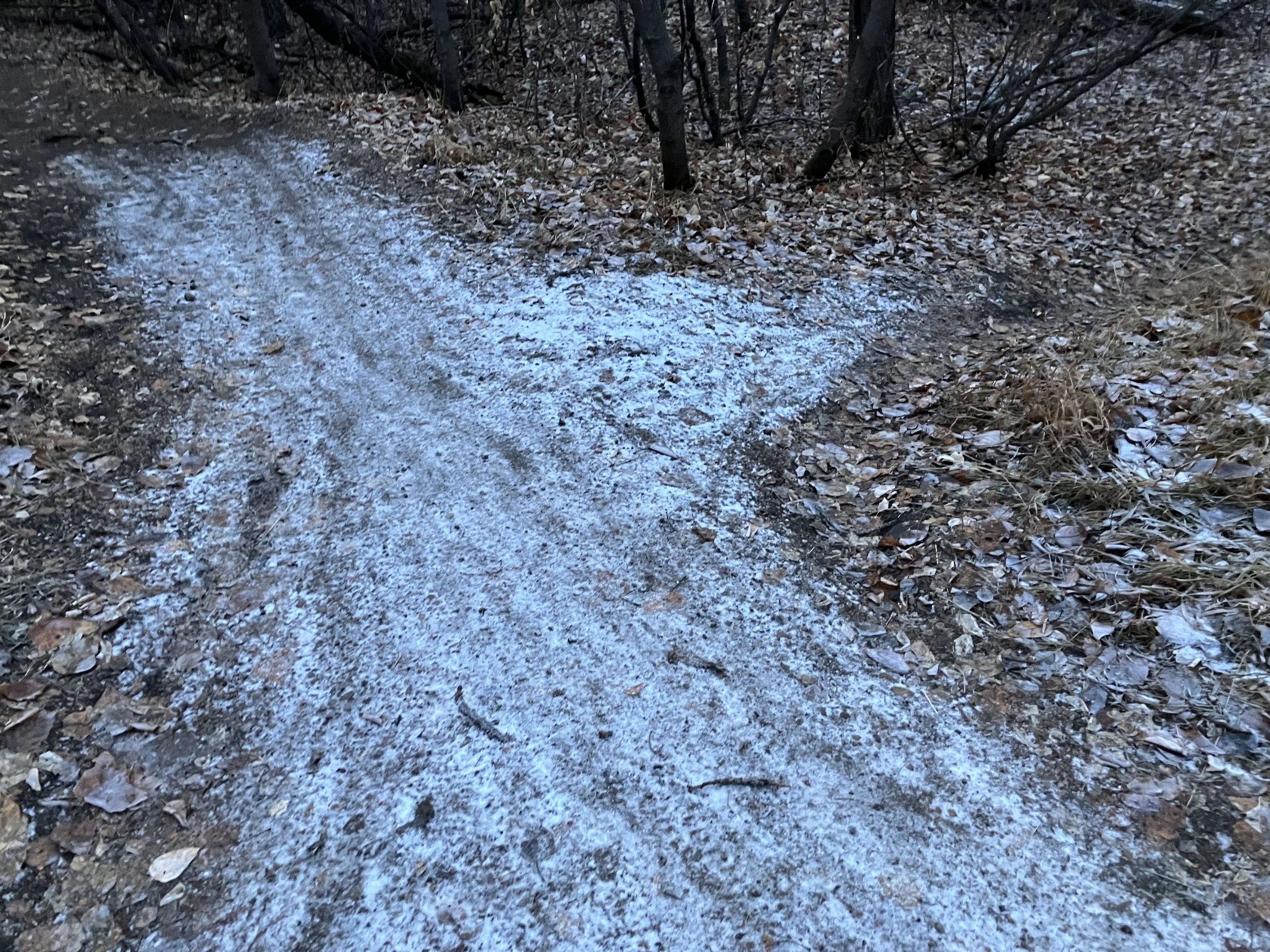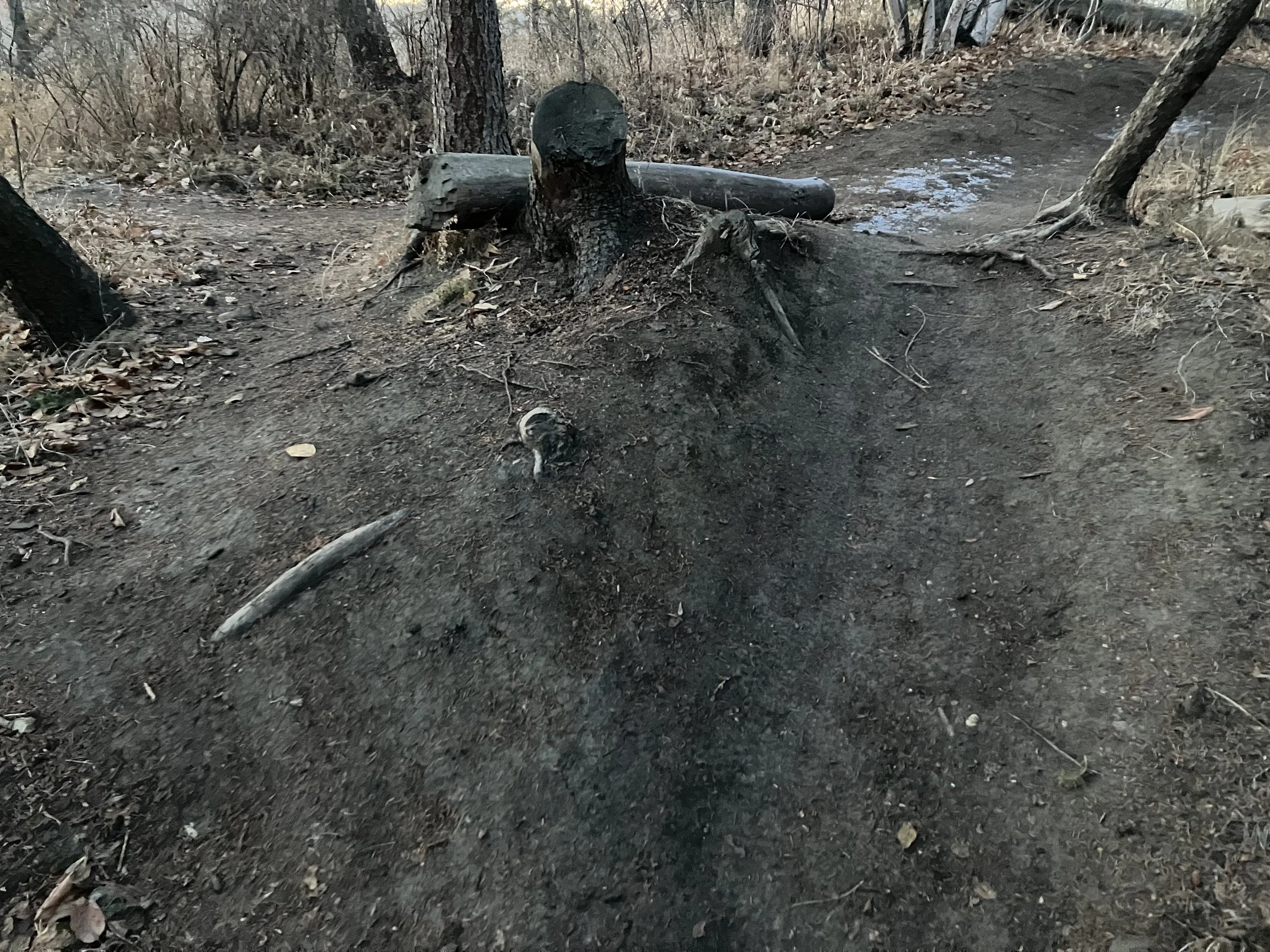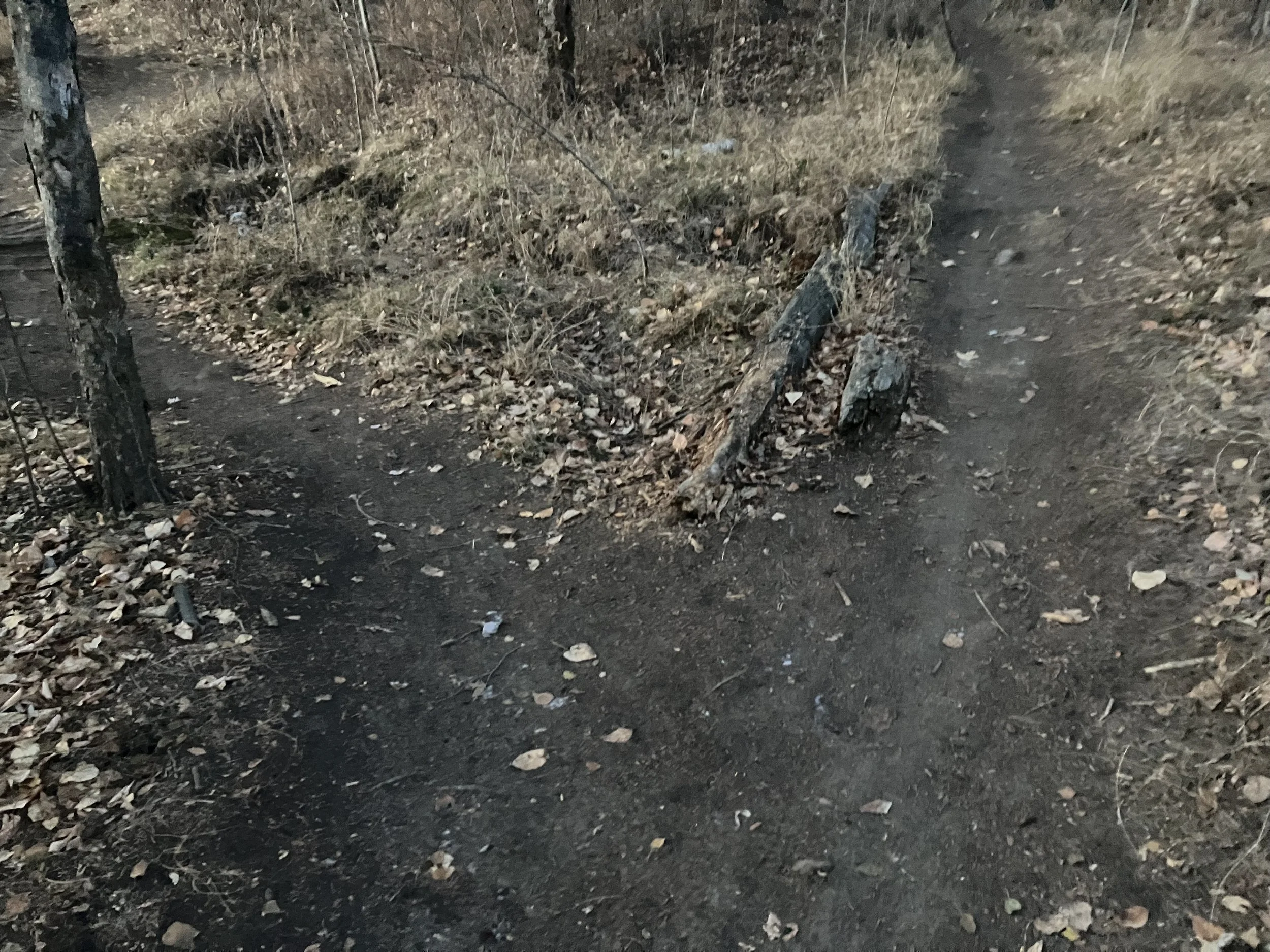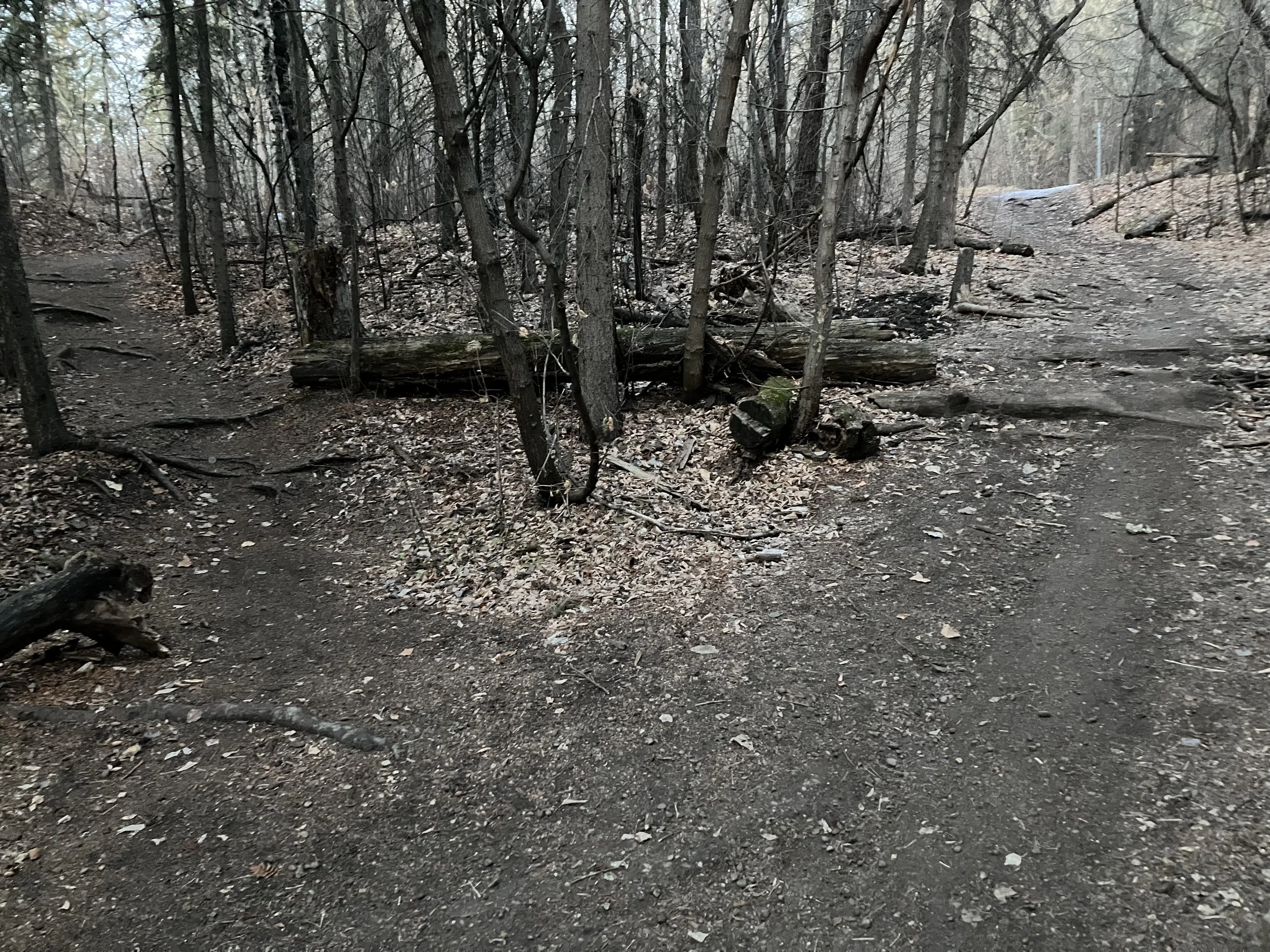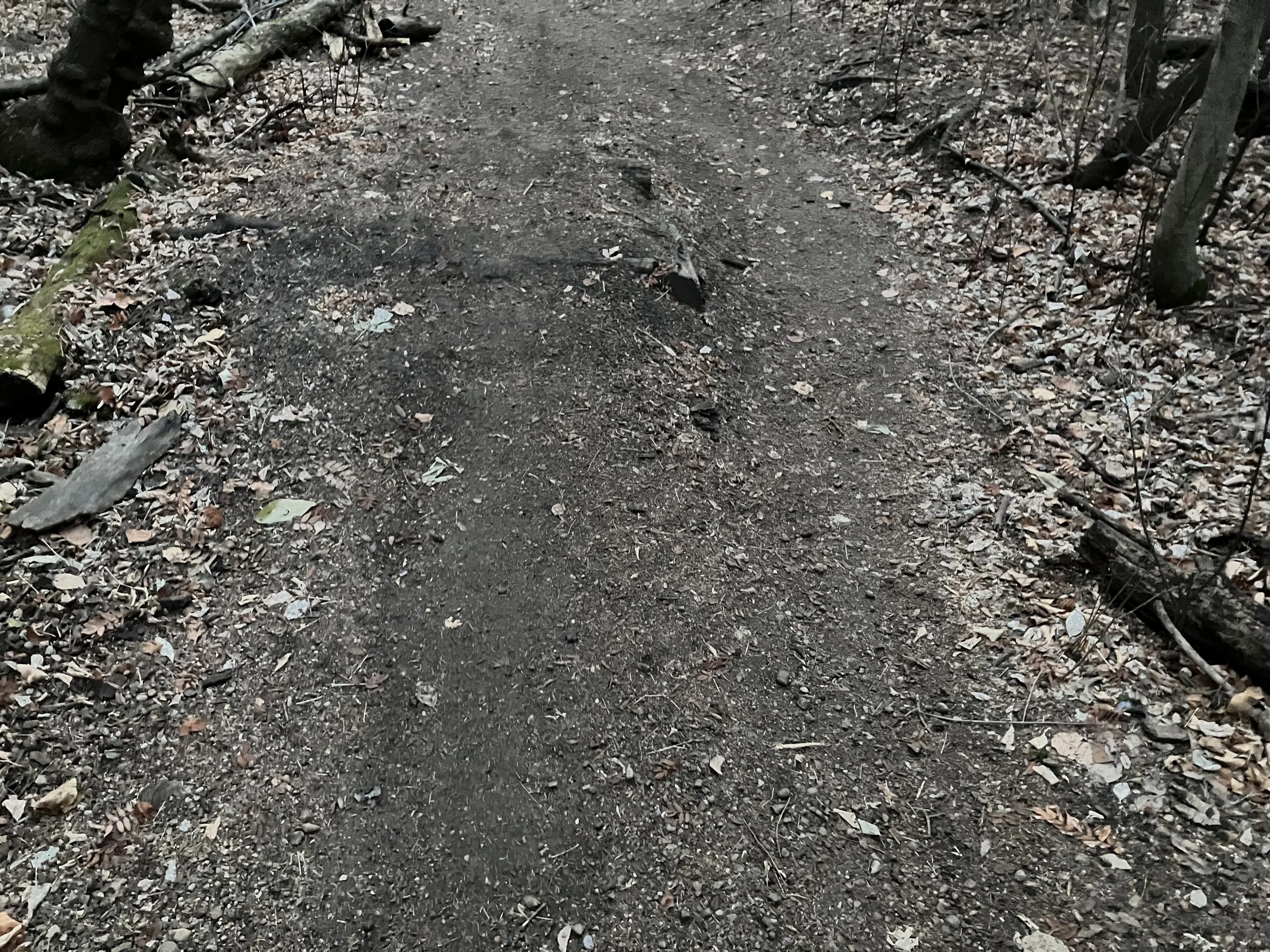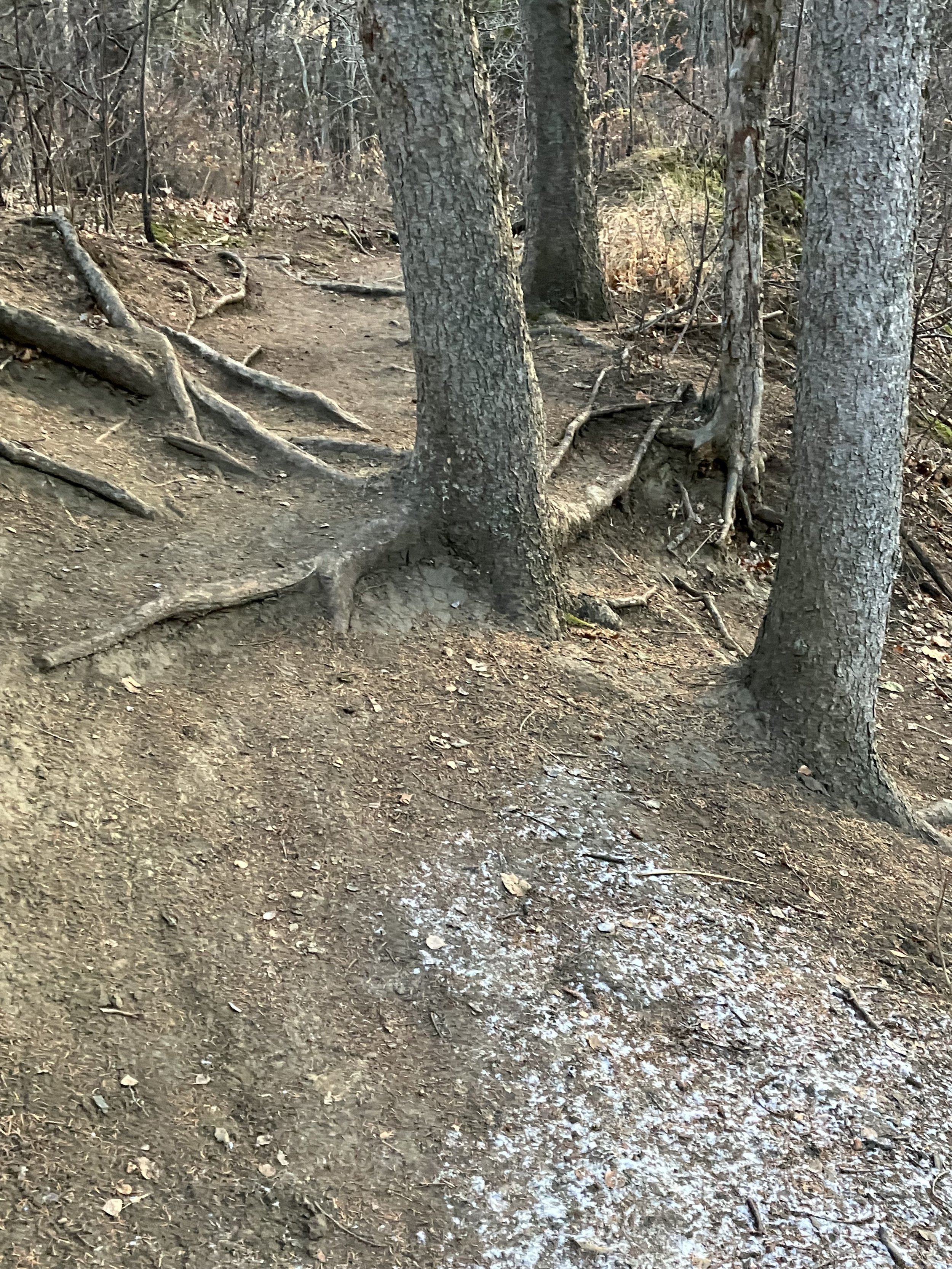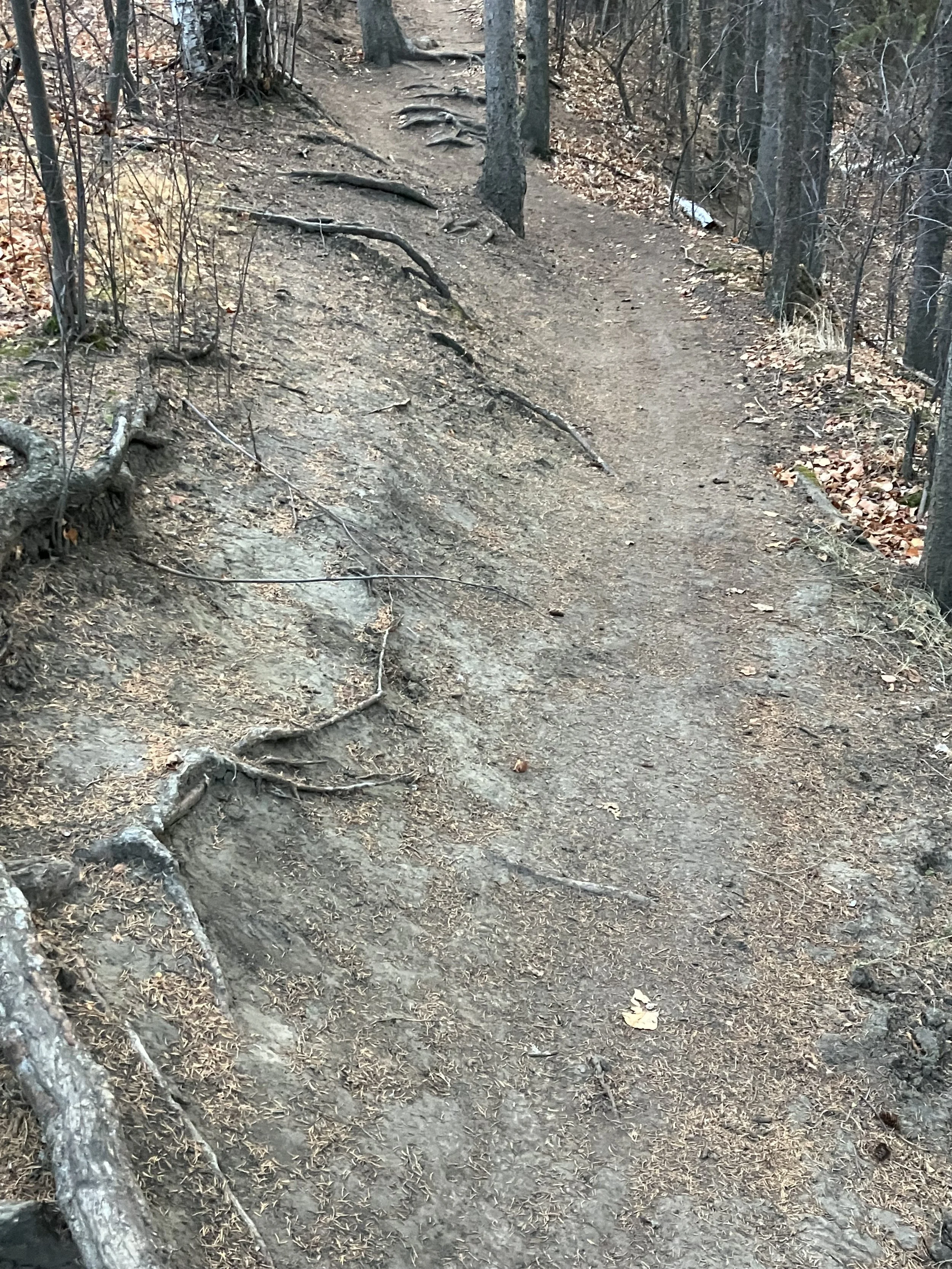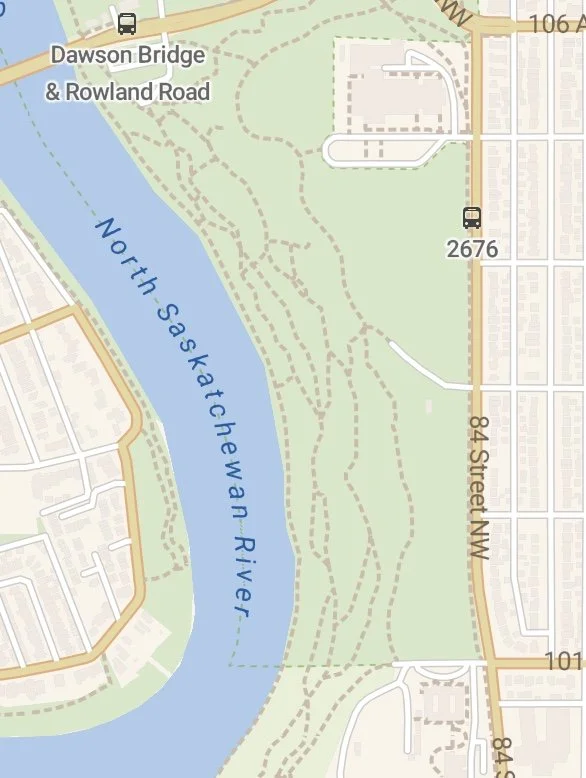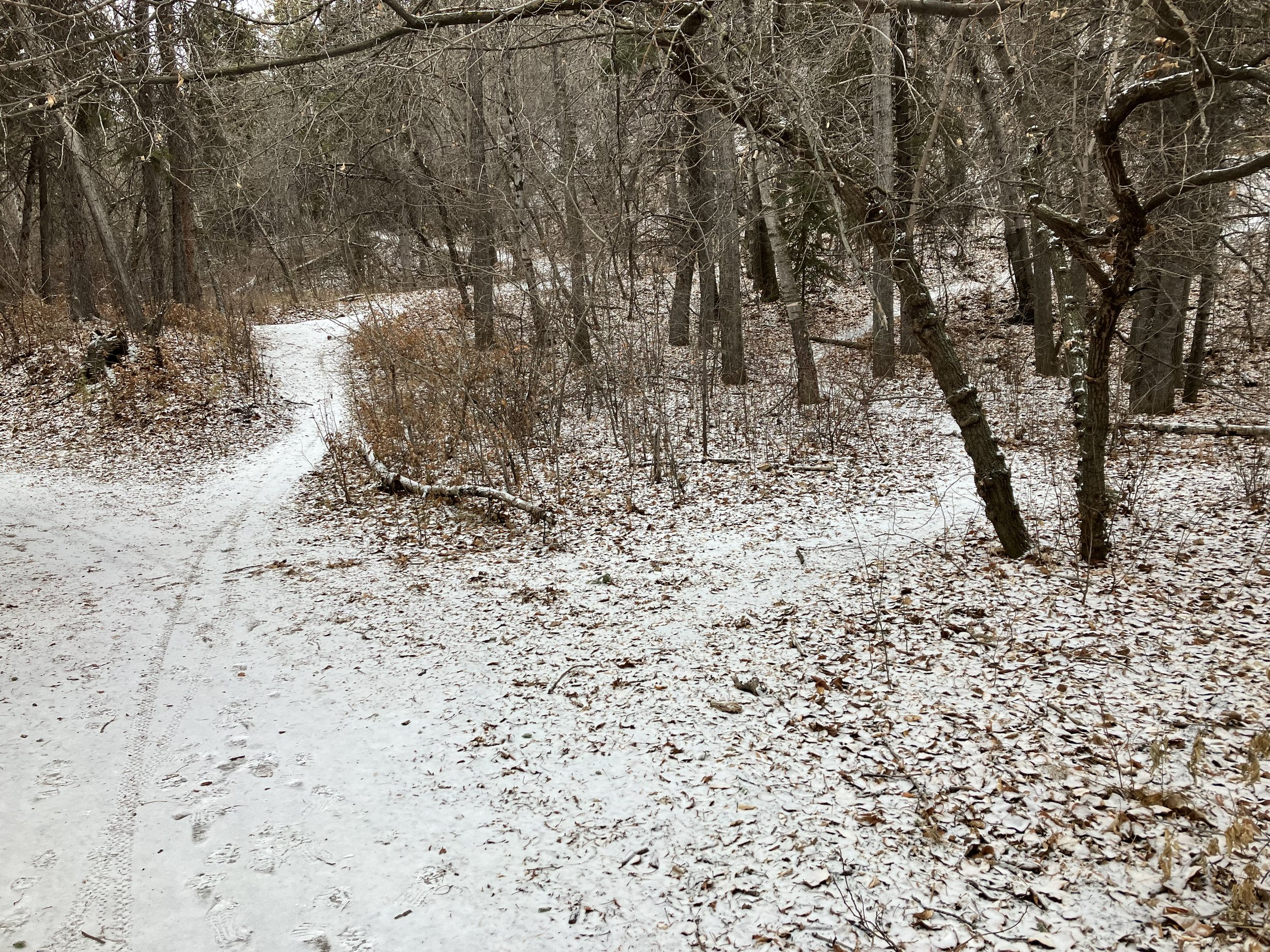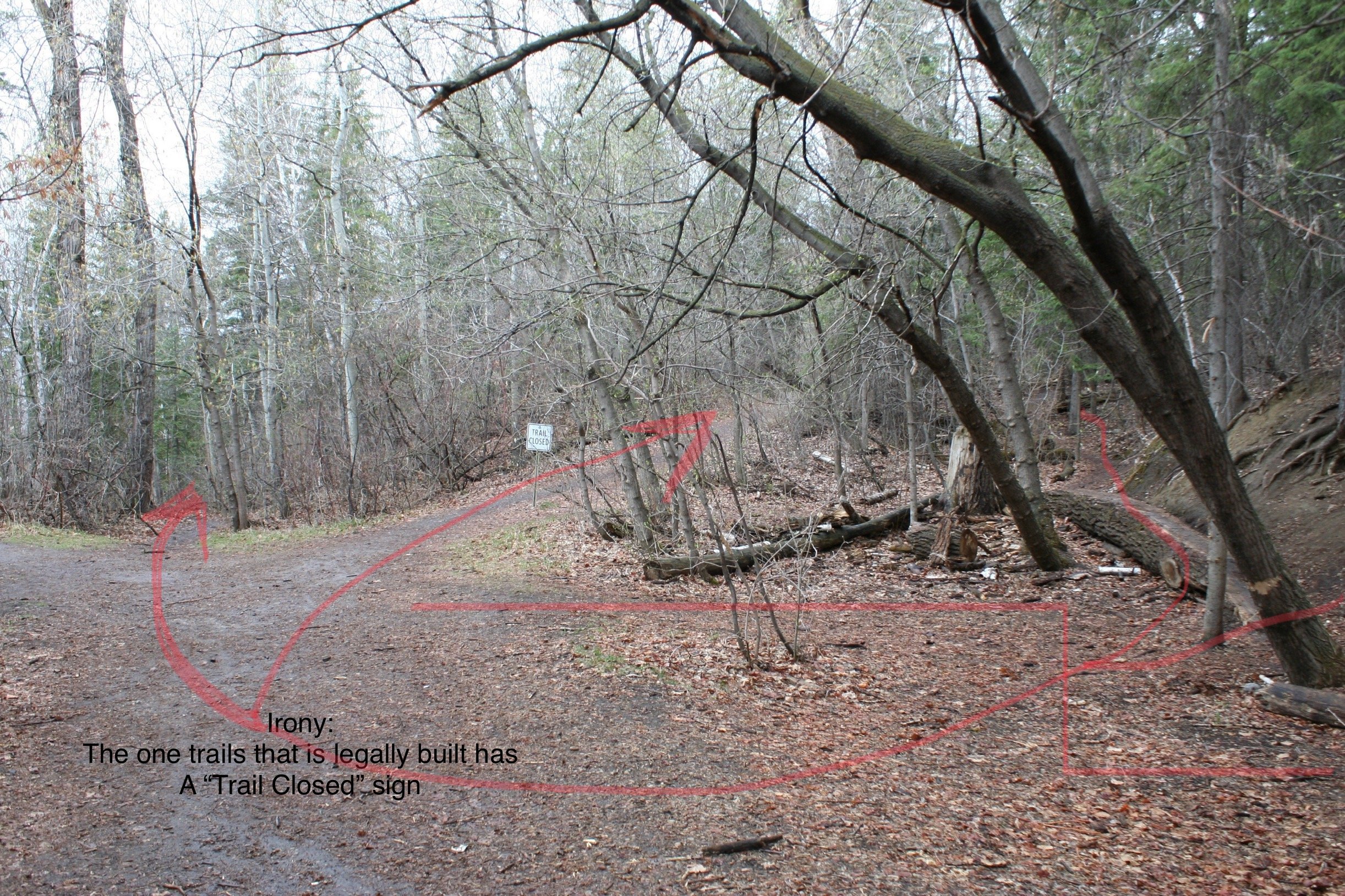The proliferation of illegal trails, a growing problem as you can see below
But first, ERVCC would like to propose a solution. Please support full funding of a Trails Strategy in the supplemental budget coming up Dec 1-4 2025. Write a letter to our councillors asking them to support funding now. We have waited long enough. Find easy tips for writing letters of support on our advocacy page also found here.
Trail braiding and widening is causing ecological harm. In the pictures below taken in 2025 you see trails are become wide and increasingly braided.
Illegal trails are proliferating.
Once established, illegal trails create additional “short cuts” and side trails. With trail widening and trail proliferation, soil is becoming eroded and habitat is becoming fragmented. In order to manage our collective impacts, we need a rational trail system that we all honour. Illegal trail cutting undermines the good work mountain bikers have undertaken for their community and it destroys the very “thing” we all want to access—Nature!
One complication of the River Valley Planning Modernization process was that some local mountain biking organizations demanded changes to the 1992 Ribbon of Green’s designated uses, and urged city council to allow bikes in “preservation” areas (where bikes were not previously allowed). We are disappointed that this change was made, without any reference to the ecological data and principles that guided the original decision-making. We are very concerned that this change will further enable the illegal trail-making that is proliferating throughout the river valley and causing ecological harm in the form of fragmentation of habitat, disturbance to nesting birds and denning animals, erosion, damage to and loss of understory, compaction of soil, disturbance to wetlands and ephemeral springs, and damage to tree roots. We are also concerned that this change further entrenches the colonial thinking that the river valley exists to serve us, rather than listening to what, as Robin Wall Kimmerer says, the earth asks of us. (See Kimmerer’s talk on this topic here.)
ERVCC has made clear that we do not see river valley use to be about “balancing” ecological integrity and recreational use, as this perpetuates the thinking that humans are separate from nature and creates a tug-of-war between perspectives. Instead, we see the issue as requiring a framework of priorities, and that all river valley use must respect ecological integrity.
Here is one small section of the valley in Forest Heights. These mapped biking trails underestimate the amount of cross cutting and short cuts. Heat maps show more and so does a walk through. It is clear there is a problem. In this area understory is eroded and the longer we wait to restore the valley the more expensive it will be.
City council has approved exploration of a Trails Strategy. Until this strategy is funded and completed, ERVCC is working with the city to try to ensure closure of the most damaging trails and restoration of those areas. We are also urging a public education campaign on the importance of river valley protection, the ways in which unsanctioned trail-building harms the river valley, the reminder that unsanctioned trail-building is illegal, and the fact that we need to move toward prioritizing respect for ecological integrity and ecological thinking.


